The appearance of dried blood is very off-putting, not to mention the potential health risks of dried blood. However, cleaning and removing dried blood is off-putting, and it is easy to see why many people are overwhelmed by the thought of removing this tough stain.
At The Sparkle Gang, we know the challenges people face when dealing with dried blood, but our experience and know-how ensure you can confidently tackle this task. In many cases, it is often best to dispose of items stained with blood, but for things you cannot dispose of, this article provides a comprehensive guide on how to remove the blood and leave an area gleaming.
As much as you want to remove blood stains as quickly as possible, you must take steps to prepare for the cleaning process. Doing so enhances your ability to remove the stain comprehensively and protects you.
There are considerable dangers and hazards to be aware of when you remove blood stains. Still, with proper precautions, you can easily remove this stain without placing yourself or anyone at risk.
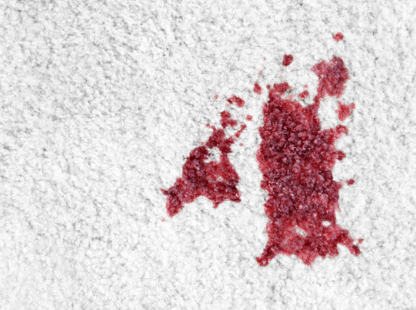
The first step in ensuring safety when removing blood stains is using personal protective equipment (PPE). Specialist clothing that protects people from exposure to pathogens and other hazardous materials includes:
You must select and wear the appropriate PPE when removing blood stains. This would include selecting gloves made of a material that can protect the skin from cuts, punctures, and exposure to blood and bodily fluids.
You must also wear a mask to protect yourself from inhaling airborne particles or droplets.
Additionally, people involved with the cleaning process should wear coveralls to prevent contamination of their clothing and other specialised gear, such as goggles or face shields, as required.
As well as protecting yourself or the cleaning staff, you should have access to cleaning equipment and other items which safeguard the area and make it easier to dispose of blood and other hazardous materials.
It would be best if you considered using the following:
Before beginning any clean-up, assessing the area and identifying any potential hazards, such as broken glass or other foreign bodies, is crucial. This helps to ensure the safety of cleaners and anyone else who may come into contact with the area.
Experienced professionals will know common dangers or risks to look out for, but the important thing is to be thorough in looking for items that might injure or harm a person. No matter the incident which led to dried blood, a hazardous item might remain in the localised area.
Therefore, take time to search the area. If you find anything questionable or potentially hazardous, remove foreign bodies from the site before cleaning up, using specialised equipment. This could include using tongs or other tools to carefully pick up and remove sharp objects or using a vacuum with a HEPA filter to pick up small particles or debris.
Additionally, everyone in this area must avoid sharp objects or hazards during the cleaning process and report any problems that cannot be safely removed to the property owner or relevant authorities. We also offer sharps removal service.
As well as PPE and safety equipment, having tools and supplies which help you remove blood stains are of significant benefit, so make sure you have easy access to the following items.
You’ll need these to blot up excess blood and apply the cleaning solution. It's essential to use a paper towel to avoid spreading the stain or any bacteria around.
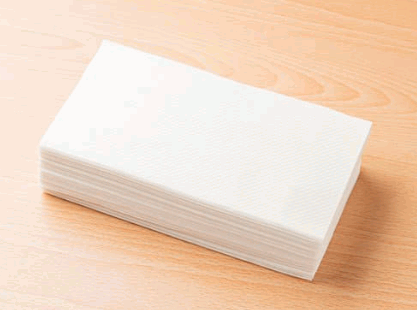
Hydrogen peroxide can be an effective stain remover because it breaks down the proteins in the blood stain. To use it, first, soak the stained area in cold water for a few minutes. Then, pour a small amount of hydrogen peroxide directly onto the stain and let it sit for a few minutes.
Blot the stain with a cloth, and repeat the process as needed until the stain is gone. Be sure to rinse the area thoroughly with cold water afterward.
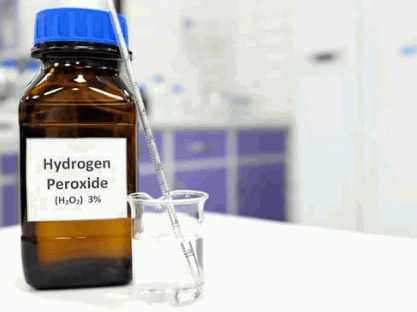
Enzymatic cleaners break down biological stains like blood. To use this type of cleaner, first, blot up any excess blood with a cloth or paper towel. Then, apply the enzymatic cleaner to the stain and let it sit for 15-20 minutes. Afterward, blot the stain with a damp cloth and rinse the area thoroughly with cold running water.
Baking soda will absorb any lingering odour from the stain. After you've removed the stain using one of the methods above, sprinkle baking soda over the area and let it sit for a few hours, or for a period overnight until it creates a thick paste. Then, vacuum the baking soda and rinse the area with cold water.
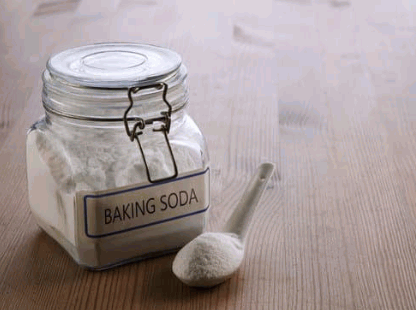
Cold water is ideal for removing blood stains because warm water can set the stain. Before using any cleaning solution, rinse the stained area thoroughly with cold water to remove as much blood as possible. Then, rinse the area again with cold water to remove any cleaning solution residue.
You can use rubbing alcohol to disinfect the area after removing blood stains. Apply a small amount of rubbing alcohol and wipe the area.
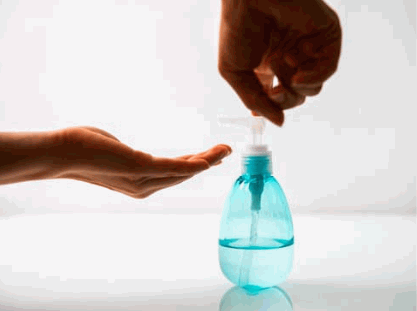
Ammonia can effectively remove dried blood stains from clothing, but it's essential to use it carefully. Mix one part ammonia with six parts water and apply the solution to the blood stain. Let it sit for a few minutes, then rinse blood stains thoroughly with cold water.
Salt helps to remove fresh blood stains. First, rinse the stain and the affected area with cool water. Then, cover the stain with salt and let it sit for a few minutes before rinsing through.
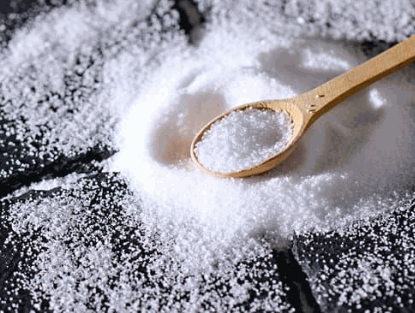
White vinegar breaks down blood stains with the added bonus of acting as a disinfectant. To use this solution, mix one-part vinegar with one-part cold water, soak the stained area for half an hour, and then wash through with warm, soapy water.
You can also use lemon juice, and lemon juice causes a notable chemical reaction alongside baking soda, creating a good cleaning substance. For more learnings, you can also check out our article "Apple Cider Vinegar Cleaning Hacks".
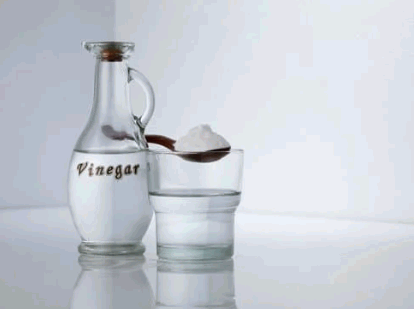
A soapy solution, like liquid laundry detergent, effectively removes many modest dried blood stains or can play a role alongside more robust cleaning substances to remove blood stains.
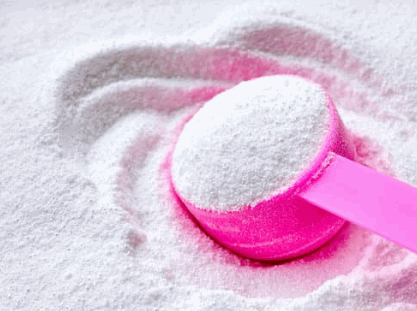
Once you create a mixture, it is often easier to filter it into a spray bottle and then spray it directly onto the stain.
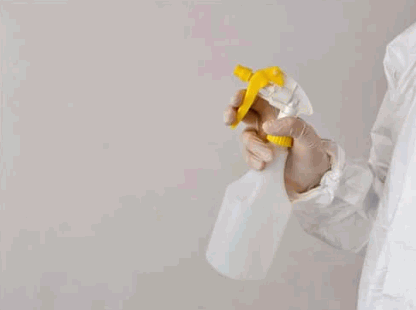
With thick or old blood stains, it is often easier to scrape away the substance, with a blunt knife or spoon being highly effective.
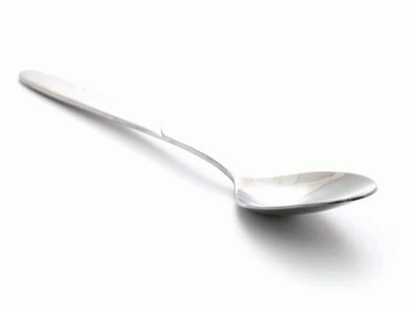
The following guide is a step-by-step guide to removing dried blood from a carpet. After the process, you’ll find tips to replicate the overall cleaning process on other areas, such as a wall. If you want to know how to remove dried blood stains from sheets, you can check out our post.
Using a clean white cloth or towel, gently blot up as much of the excess blood as possible. Do not rub the stain, as this can spread the blood deeper into the carpet fibres.
Using a spray bottle, dampen the dried blood stain with cold water. Do not use warm or hot water, as this can set the stain further.
Mix a small amount of mild dish soap or laundry detergent with cold water to create a soapy solution. Apply a small amount of the solution directly onto the stain and use a clean white cloth or towel to blot the stain. Continue to apply and blot until the stain lifts away. This is also a good pre-treat solution for old blood stains before using a harsher cleaning solution.
If the stain is still visible, mix equal parts hydrogen peroxide and cold water in a spray bottle. Spray the solution onto stubborn stains and let it sit for 5-10 minutes. The hydrogen peroxide will help to break down the blood and lift stubborn blood stains. Always be sure to wash through all the hydrogen peroxide at the end of the cleaning process.
(If you don’t want hydrogen peroxide, place ammonia, vinegar, baking soda, or an enzymatic cleaner directly onto the stain. Do not mix cleaning products (apart from vinegar and soda) as the outcomes are often unpleasant or hazardous.)
Using a clean white cloth or paper towel, blot the stain with cold water to rinse away the soap and hydrogen peroxide. Continue to blot until the stain is no longer visible.
If there is any remaining residue or dried blood, use a butter knife or spoon to scrape it away from the carpet fibres gently.
If the stain remains, repeat the process, perhaps trying a different cleaning product.
After removing the stain, vacuum the area to remove any remaining debris or cleaning solution.
If you are dealing with dried blood on a wall, the steps are similar to the above process. Rather than vacuuming a floor, you should wipe down all excess water from the wall and then dry it off until you are happy with the finish. If you're interested in learning more, feel free to check our article on "How To Vacuum Carpet Like A Professional".
Removing dried blood can be a bit tricky, but here are some helpful cleaning tips to keep in mind:
Act quickly: The sooner you can tackle the stain, the better. Dried blood is harder to remove than a fresh blood stain.
Use cold water: Hot water often sets the stain and makes it harder to remove. Instead, use cold water to loosen the dried blood.
Blot, don't rub: Rubbing the stain can push it deeper into the fabric, making it more difficult to remove, especially on delicate fabrics. Instead, gently blot the stain.
Wash in cold water: Once you've removed as much of the stain as possible, cold wash the fabric. Avoid using hot water, as this can set the stain.
Avoid using bleach: While bleach can effectively remove stains, it can also cause discolouration and damage to the certain stained fabrics. Avoid using mild bleach on blood stains, as it can cause other staining.
Treat the stain from both sides: If the stain has soaked through to the other side of the fabric, treat it from both sides with a damp cloth. This ensures you completely remove the stain.
Once all dried blood is gone, and you are satisfied the area is clean, you should clean and decontaminate yourself, which you can do with the following steps:
With old blood stains, you might think a simple method won't work for stain removal. However, with pre-treatment and the right cleaning materials, you can remove dried blood stains safely, and effectively.